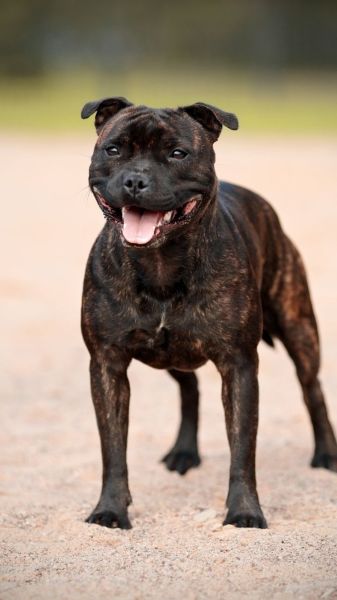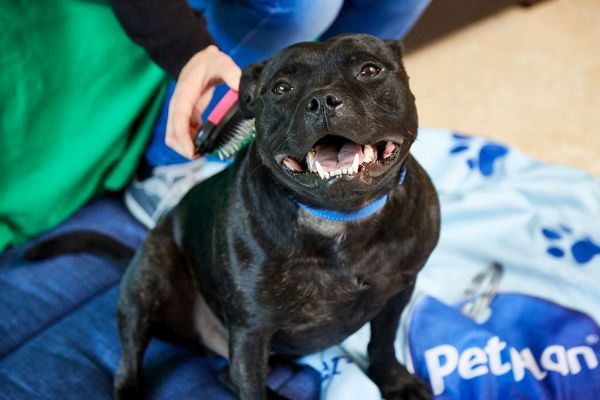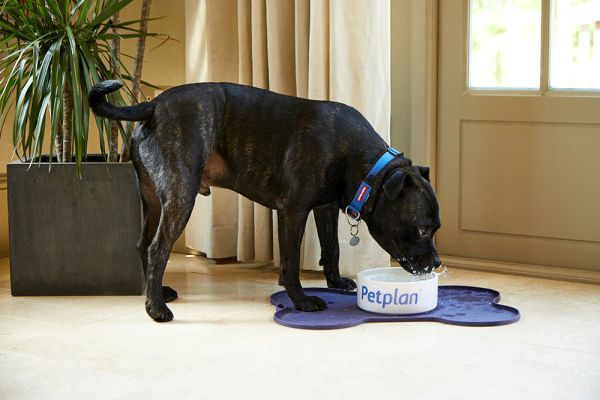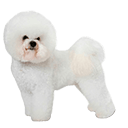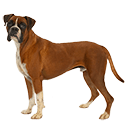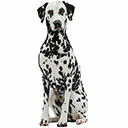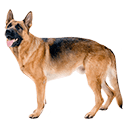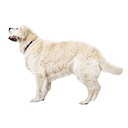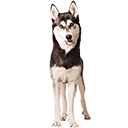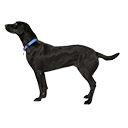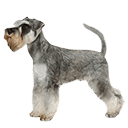If you are considering getting a puppy from a breeder,…
Read more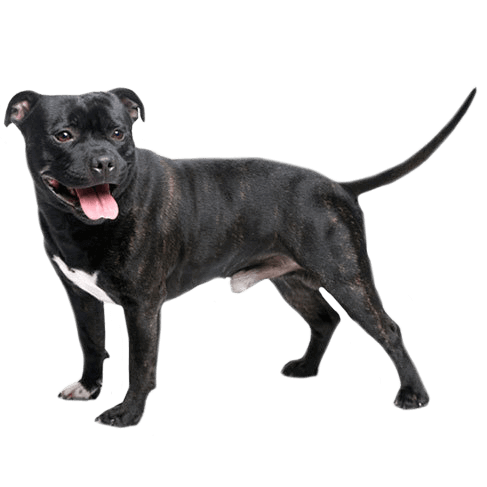
A courageous companion who loves to play
Affectionate, intelligent and with a kind, gentle nature, Staffordshire Bull Terriers have unfairly been given a bad reputation over the years. People pleasers through and through, this breed is relatively easy to train, but their intelligence, combined with an occasional stubborn streak and competitive personality means they need a firm leader.
Vital Stats
| Size: | Medium |
|---|---|
| Coat: | Short-haired and low maintenance |
| Exercise: | 1+ hours per day for adult dogs |
| Life span: | 10+ years |
| Breed group: | Terrier |
| Temperament | Fearless, affectionate, loyal |
coat Exercise 1+ hr Life span 10+years

Staffordshire Bull Terrier Temperament & Personality
Though they are affectionate and kind, Staffies don’t always know their own strength and can be boisterous.

Staffordshire Bull Terrier Training & Exercise
Eager to please, Staffies are relatively easy to train, but their stubborn streak requires a firm, patient hand.

common illnesses in a Staffordshire Bull Terrier
Common Staffordshire Bull Terrier Health Conditions
Like all breeds, Staffordshire Bull Terriers are prone to certain conditions, and choosing a reputable breeder or rehoming organisation should be the first step to having a happy and healthy dog. To help you be more aware and prepared for the most common health issues, if they should arise, we have put together some information on the health issues that we see the most in Staffordshire Bull Terriers.
Common Staffordshire Bull Terrier Health Conditions
Eye disorders +
Eye disorders are very common in dogs. Conjunctivitis, for example, is due to the most superficial layer of the eye becoming inflamed as a result of infections, irritants, allergies or trauma. Another common, painful eye irritation is corneal ulceration, which happens when the surface of the cornea is grazed as a result of scratches from other animals or vegetation, or because of foreign material in the eye, chemicals, heat or smoke, or infection. Treatment depends on the type and severity of eye problem and may be required for life to keep the dog’s vision in good health. Corneal ulcers, for example, can be treated using eye drops and sometimes surgery.
Skin disorders +
The skin is the largest organ of a dog’s body and a number of disorders can affect it. Like other dogs, Staffies can suffer from allergies that lead to dermatitis (skin inflammation). Allergies can be caused by many different items, including things that are inhaled (such as pollen or dust mites), items that are eaten (for example, wheat), items that the dog comes into contact with (for example, washing powders), or bites from parasites such as fleas. Another skin problem, pyoderma (meaning ‘infection of the skin’) is usually caused by bacteria, fungi (‘ringworm’) or yeasts. Staffies can also be affected by a skin condition called demodectic mange. It is caused by the parasitic mite demodex, which can multiply rapidly and damage the hair, leading to hair loss and flaky skin. Skin disorders can be managed using various treatments, usually required long-term, which means the dog can get on with enjoying life.
Lumps & bumps +
Like all dogs, Staffies can develop masses (lumps and bumps) in the layers of fat, skin and muscle that cover their bodies. These might be warts, cysts, lipomas (soft fatty lumps), abscesses or tumours, such as mast cell tumours or histiocytomas. Mast cells are normal skin cells that help dogs respond to trauma and damage by releasing histamine. These cells can sometimes replicate into a serious type of tumour called a mast cell tumour. They vary widely in size and shape, but most take the form of a solitary lump within the skin. Histiocytomas are benign skin tumours that can appear suddenly on the surface of the dog’s skin. Despite their appearance, they are not painful. Generally, treatment depends on the size, location and exact nature of the lump, but almost always involves surgical removal.
Patella luxation +
The kneecap (or ‘patella’) sits in a groove at the end of the femur (thigh bone). A dislocating (or ‘luxating’) kneecap is one that pops out of its groove. A relatively common condition in Staffies and other small breeds, dislocation happens because the alignment of the bones from the hip through the knee to the ankle is not straight, which pulls the kneecap to one side. Treatment depends on the severity of the condition, but surgery may be required to reduce the likelihood of arthritis and enable the dog to live a normal life.
Cruciate ligament disease +
The cruciate ligaments are found inside the knee joint and hold it stable. Cruciate ligament disease means that this ligament slowly frays and gets weaker and can get worse over time. Treatment for cruciate ligament disease usually is surgery to help stabilise the knee joint. However, like all dogs, Staffordshire Bull Terriers can also develop arthritis from this condition, and long-term treatment is often required to keep them active.

Staffordshire Bull Terrier Grooming
Staffies are quite low-maintenance when it comes to grooming but usually have one heavy shed per year.

Staffordshire Bull Terrier Nutrition
Staffordshire Bull Terriers can be prone to food allergies so choose their food carefully and check with your vet for specific advice if you are having issues with your dog and their diet.

What to know before you buy or rehome a Staffordshire Bull Terrier
Considering welcoming a loyal and loving Staffordshire Bull Terrier into your home? Before you buy or adopt one, here are a few important things to remember.
Discover some of the most popular dog breeds
Find out more about some of the UK's most popular dog breeds and discover which breed could be your ideal canine companion with our breed selector quiz.
Staffordshire Bull Terrier insurance considerations
Most Staffordshire Bull Terriers live long and happy lives, but they can suffer from specific health problems, such as skin allergies and eye conditions. That’s why it’s important that when choosing dog insurance, you consider the length of time policies cover different conditions. Petplan’s Covered For Life® plans refresh the veterinary fees each year allowing you to claim for ongoing conditions for the rest of your pet’s life providing there is no break in cover.
Get a Staffordshire Bull Terrier quote
